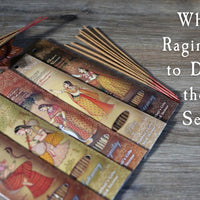
Nine Nights with the Devi—Devi Navaratri—is one of the most important Hindu festivals of the year.
Navaratri means “nine nights” but who is the Devi?
The Devi is the cosmic Divine feminine energy, also called Shakti. Divinity can be described as having two different aspects: feminine and masculine. Another way to put it is that one aspect is static (
prakasha) and the other dynamic (
vimarsha Shakti). Brahman is motionless, while the Shakti, which is the immanent aspect, is movement and activity. While the first aspect is identified with God as Father, vimarsha Shakti is the creative cosmic power identified with the Divine Mother, the Devi. It is this polarity of the Self, Mashevara and Masheshvari, that Krishna refers to in the Bhagavad Gita (9.17): “I am the father and the mother of this world…” While the masculine aspect is called many different names such as God, Ishvara, Shiva, Vishnu and others, the feminine aspect of Divinity is called Devi, Shakti, Durga, Lakshmi, Saraswati and more.

Everything that is apparent in this world is due to the feminine energy and, according to the Vedic scriptures, in order to see the apparent world, we require a certain amount of delusion so that we will believe there is something apart from Divinity. The deluding energy, or covering power, is called maya. Maya is the Divine Mother herself. She causes us to see ourselves as separate from the Divine, and the world and reality as something that exists apart from the Divine. This delusion is what leads us to experience happiness and sadness, misery and pain. It is by the Devi’s power that we are deluded and by her power that we can once again obtain pure insight, which liberates us from the cycle of misery, also known as samsara. Therefore, the Devi is worshipped for two purposes: material causes as the one in charge of material energy, and spiritual elevation and liberation as the one who is able to remove this illusion.
The forms of the Devi
Divinity is unity that appears to have many different aspects and these take various forms that perform different actions in the apparent world. In other words, in the world that most of us see. For example, Shiva is the divine manifestation of destruction, Brahma of creation and Vishnu maintenance. In the same way, Divinity’s energy appears as the Devi in many forms with different names. As the feminine aspect, the Devi is described as the consort of Ishvara , or God. According to the various aspects of the Divine, she too takes different forms. When accompanied by Lord Shiva, the destroyer, we see the Devi as
Parvati or
Durga. This is a fierce form that destroys impurities and fights against impure powers. As the consort of Brahma, the creator, we find the Devi as
Saraswati, the Goddess of learning, arts and music. Finally, as the consort of Vishnu, the preserver and maintainer, Shakti appears as
Lakshmi, the Goddess of prosperity and success. Nava means nine and ratri is nights. In these nine days, three goddesses in particular are worshipped – Durga, Lakshmi, and Saraswati–as three aspects of the divine Shakti. These three goddesses correspond to three different levels in which divine energy is expressed. Kriya shakti is the power of action, iccha shakti is the power of the will, and jnana shakti is the power of knowledge. Kriya shakti is expressed through Durga, Lakshmi is the expression of iccha Shakti, and Saraswati is the personification of jnana shakti. Durga destroys rough obstacles on the physical level, Lakshmi destroys the mental obstacles and Saraswati destroys ignorance about our true divine nature, which is the most subtle obstacle of all. The most important Devi Navaratri takes place in September-October, depending on the year, when the Divine Mother of the universe is worshipped during nine nights and ten days as Durga, Lakshmi, and Saraswati.
Nava Durga
Durga, in her fierce and strong nature, is considered the main form of the Devi. In Sanskrit, the word Durga means “one who is difficult to attain.” She is described in the scriptures as having nine different forms and in some parts of India, each day of Navaratri is dedicated to a different form of Durga, who manifested into each of them in her glorious fight with demons, a fight that she eventually won. Winning this war gave Durga the name Mahishasuramardini. The last day of Navaratri celebrates the day she won the war, and therefore in this day, all the various forms are adored.
The many Navaratras
In Shaktism, which is the branch of Hinduism that worships the Divine Mother, the annual cycle of 365 days are divided into 49 periods of nights, called navaratras. In many Puranas and Dharma Shastras, five of these periods are considered especially auspicious for worship of Shakti, the divine mother of the universe. The five navaratris are: Vasanta Navaratri, Gupta Navaratri, Sharada Navaratri, Paush Navaratri and Magha Navaratri. The dates vary on the Gregorian calendar from year to year because they are according to Hindu Calendar. 1 Vasanta Navaratri or Chaitra Vasanta Navaratri, are also known as Rama Vasanta Navaratri. This is held during the first nine days in the Vasantartu, which is springtime, around March-April.
- Gupta Navaratri, or Ashadha Navaratri is also known as Gayatri or Shakambhari Navaratri takes place in June-July.
- Sharada Navaratri or Maha Navaratri is the most important of these celebrations. It takes place in September-October, depending on the year. The Divine Mother of the universe is worshipped during nine nights and ten days as Durga, Lakshmi, and Saraswati.
- Paush Navaratri consists of nine days of worship of nine different aspects of Shakti in December-January.
- Magha Navaratri, or Gupta Navaratri, is held especially in North India in Shukla Paksha in January.
The way in which the holidays are celebrated varies from one place to another. In the south of India, on the day known as saptami, Goddess Saraswati is worshiped, while on the day called ashṭami, Mother Durga is worshiped. The navami day, called Mahanavami, is celebrated with Ayudhapuja, worship of the instruments and tools that we use for work and help us make our living. In several places in North India, it is celebrated by reciting parts of the great epic called the “Ramayana” and theatrical performances based on its episodes.
 Nine Nights with the Devi—Devi Navaratri—is one of the most important Hindu festivals of the year.
Nine Nights with the Devi—Devi Navaratri—is one of the most important Hindu festivals of the year.
 Everything that is apparent in this world is due to the feminine energy and, according to the Vedic scriptures, in order to see the apparent world, we require a certain amount of delusion so that we will believe there is something apart from Divinity. The deluding energy, or covering power, is called maya. Maya is the Divine Mother herself. She causes us to see ourselves as separate from the Divine, and the world and reality as something that exists apart from the Divine. This delusion is what leads us to experience happiness and sadness, misery and pain. It is by the Devi’s power that we are deluded and by her power that we can once again obtain pure insight, which liberates us from the cycle of misery, also known as samsara. Therefore, the Devi is worshipped for two purposes: material causes as the one in charge of material energy, and spiritual elevation and liberation as the one who is able to remove this illusion.
Everything that is apparent in this world is due to the feminine energy and, according to the Vedic scriptures, in order to see the apparent world, we require a certain amount of delusion so that we will believe there is something apart from Divinity. The deluding energy, or covering power, is called maya. Maya is the Divine Mother herself. She causes us to see ourselves as separate from the Divine, and the world and reality as something that exists apart from the Divine. This delusion is what leads us to experience happiness and sadness, misery and pain. It is by the Devi’s power that we are deluded and by her power that we can once again obtain pure insight, which liberates us from the cycle of misery, also known as samsara. Therefore, the Devi is worshipped for two purposes: material causes as the one in charge of material energy, and spiritual elevation and liberation as the one who is able to remove this illusion.








0 comments